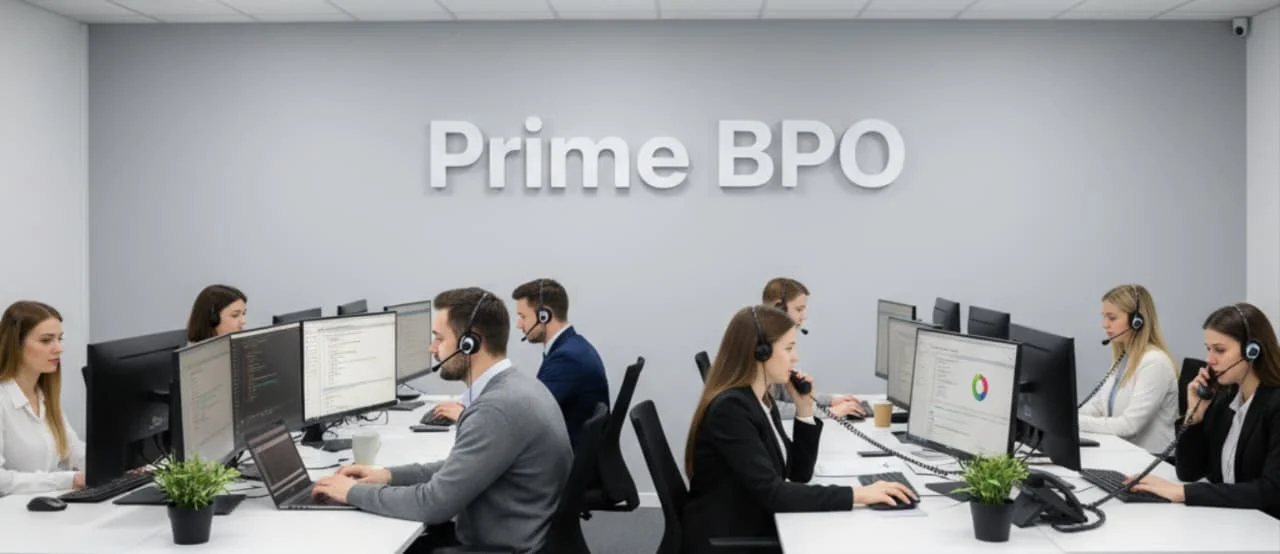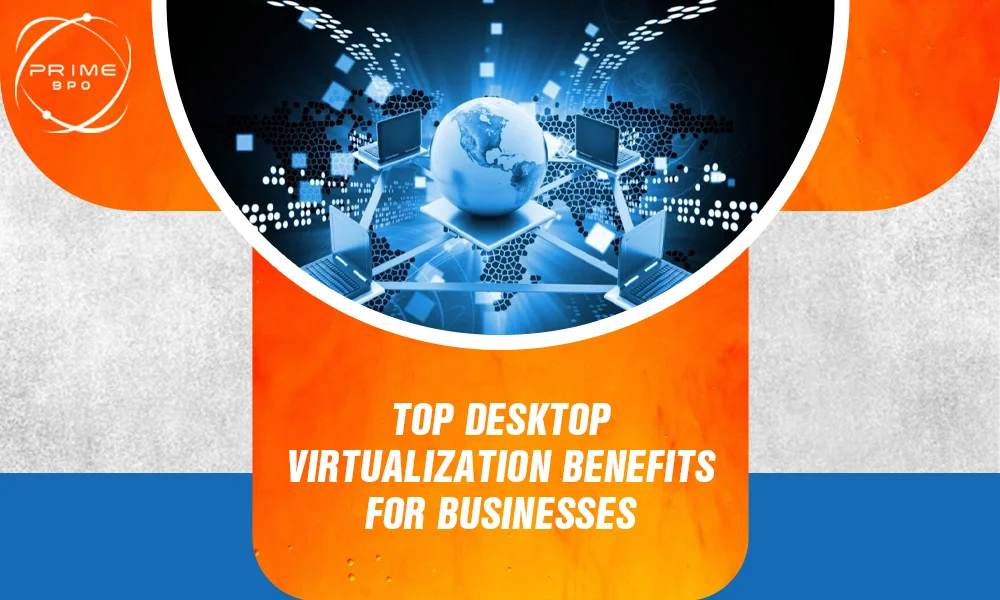Desktop virtualization is becoming a game-changer for businesses, offering flexibility and efficiency like never before. But what exactly are the desktop virtualization benefits, and how can it help your business grow? Imagine accessing your desktop from anywhere, cutting down hardware costs, and boosting security all at once. In this guide, we'll explore the key advantages of desktop virtualization and how it can transform the way you work. Are you ready to discover how this technology can benefit your business?
Get Free Quotes
Customized Options Await
What Is Desktop Virtualization?
Despite being a somewhat generalized term, virtualization simply refers to the operation and management of computing components on virtual platforms. Its primary use is to simplify the management and the optimization of resources.
That being said, desktop virtualization is simply the concept of replacing traditional physical desktop environments with remotely controlled computing environments.
This concept is acclaimed as the most effective virtualization solution to meet the computing world’s demands for reduced management costs, enhanced data security, and more flexibility–suiting any size of organization, from home usage to multinational entities.
Desktop virtualization benefits
A fast-paced and ever-evolving digital landscape is making it increasingly difficult for businesses to stay on top. The increasing number of heterogeneous endpoints that employees use to access corporate resources and cloud computing has made desktop management more challenging.
Done correctly, the desktop virtualization benefits are substantial. Desktop virtualization consolidates most of the enterprise’s computing in a data center, allowing the organization to enjoy significant cost savings, improved security, and enhanced agility. This post explores the top five benefits of using desktop virtualization.
1. Secure and Centralized Management
The traditional PC infrastructure has dominated desktop computing for a long time because it represents a constructive compromise between functionality and performance. However, streamlining IT management in such an environment is exceptionally challenging because of today’s widely used distributed computing environments and heterogeneous endpoints.
For example, with a traditional PC infrastructure, IT teams have to constantly monitor individual PCs for any signs of threat and install patches that fix the issues. In a desktop virtualization environment, an IT administrator can simply use a golden image or virtual machine (VM) as the basis for installing, patching, or upgrading applications.
Since the golden image contains the organization’s operating system (OS) and hardware configurations, any device that connects to the VM has its applications patched and updated automatically. In case a vendor releases a new patch or update, IT teams only need to update the golden image, and all devices using that VM update automatically to the latest version of the software.
Desktop virtualization also allows organizations to maintain security because applications and files don’t reside on the employees’ endpoints. Instead, the resources are housed in a server within the data center. If the device gets corrupted or lost, there is nothing that threat actors can access and compromise the company from the endpoint’s local storage.
2. Efficient Recovery and Backup
The primary goal of an effective recovery and backup plan is to get the service up and running without delay in the event a disruption occurs. This reduces the impact of interruption and ensures the organization continues to generate revenue. The traditional approaches to recovery and backup measures largely involve making use of physical resources such as external disks and portable storage devices.
While these measures can help you implement business continuity and disaster recovery (BCDR) measures, they require an enormous physical space and usually take time to restore if a disruption occurs. Virtual desktop recovery—a disaster recovery model that provides failover mechanisms to virtualized resources—can help you achieve an efficient recovery and backup.
For example, IT teams can leverage replication to create exact VMs in a secondary site in real time. Compared to traditional disaster recovery replication approaches that depend largely on physical resources, virtual disaster recovery provides enhanced efficiency, speed, and flexibility when it comes to recovery and backup.
3. Significant Cost Savings and Power Efficiency
In a desktop virtualization environment, the actual computing takes place on the server and not the endpoints. As such, the organization doesn’t need to purchase expensive PCs for its employees. Companies can allow employees to use thin clients or leverage their preferred devices under the bring your device (BYOD) framework to access corporate resources securely.
Beyond the hardware cost itself, desktop virtualization also streamlines the management of enterprise resources. With desktop virtualization, IT teams do not have to maintain every device in the workplace. While there is no doubt that you’ll still require skilled IT staff, the team can be much smaller if you implement desktop virtualization.
Most importantly, desktop virtualization can help you free up space by consolidating servers based on workload demands. This not only cuts the overall IT costs but also helps to minimize power consumption, potentially reducing energy bills by a significant amount.
4. Easier Rollout and Streamlined Maintenance
If the company has many endpoints to manage, desktop virtualization can help reduce the amount of time IT teams take to undertake large-scale rollouts and upgrades. Instead of having to manage each endpoint separately, IT teams can leverage a single golden image containing OS patches, drivers, and even applications to set up virtualization environments.
The golden image can also help enforce security. For example, IT teams can configure the golden image to adhere to the organization’s security and compliance requirements, which means the deployed resources adhere to those policies.
5. Improved Flexibility
Desktop virtualization solutions simplify the process of onboarding new employees in the organization. Rather than wasting precious time configuring devices, installing applications, and preparing network connectivity, IT teams can quickly onboard the endpoint with enterprise resources with just a few clicks.
They can personalize and manage resources for multiple employees through a single console. Desktop virtualization benefits also extend to employees. For example, employees can use any device to connect easily to the enterprise’s IT infrastructure. Due to centralized management, IT teams can replace broken thin clients easily with other devices that employees have on hand and install applications on the fly. This ensures that their productivity is not affected.
6. Environmentally Friendly
The nature of desktop virtualization increases an organization’s ability to be green. With traditional computing, every business deals with its hardware. This leads to wasted energy and equipment. With virtualization, on the other hand, businesses are reducing energy usage and the amount of equipment needed. As business information is virtualized, the need for extra resources is reduced drastically. Virtual workspaces are accessed via the Internet and through our data centers that operate efficiently due to multi-tenancy and the latest technology and equipment.
7. Top Security
While many businesses still feel iffy about the security of virtualization, the capabilities of the cloud have strengthened recently in this regard. The security you experience depends on the provider you choose, so it’s important to find one that you trust and that can give you the reassurance you need. When you decide to move into the cloud, your data is the most sensitive and important thing, and we understand that. We treat your data like it contains top-secret information and we certainly don’t want any unwanted visitors. Because of this, we offer the highest quality security, routers, switches, and monitoring to make sure your cloud remains your cloud.
Get Free Quotes
Customized Options Await
8. Increased Agility
Agility is key to success in today’s competitive marketplace, and although smaller organizations may not have as many resources as larger ones, they are often extremely agile. Desktop virtualization can increase that agility for larger organizations by centralizing maintenance, governance, and security and allowing easy scaling. That means when new opportunities present themselves, large companies can move to take advantage of them faster than in a conventional system.
Conclusion:
In conclusion, desktop virtualization offers a flexible, cost-effective, and secure solution for modern businesses. It allows you to access work from anywhere, reduce hardware expenses, and improve overall security. As technology continues to evolve, desktop virtualization could be the key to making your business more efficient and adaptable. Are you ready to take advantage of these desktop virtualization benefits and streamline your operations?
FAQs
How does desktop virtualization improve security?
It keeps data centralized in a secure server, reducing the risk of data loss or theft on individual devices.
Can desktop virtualization save money?
Yes, it reduces the need for expensive hardware upgrades and maintenance, cutting overall IT costs.
References:
- https://www.31west.net/blog/top-benefits-of-using-desktop-virtualization/
- https://v2cloud.com/blog/desktop-virtualization-benefits
- https://www.nutanix.com/info/virtualization/desktop-virtualization#definition






